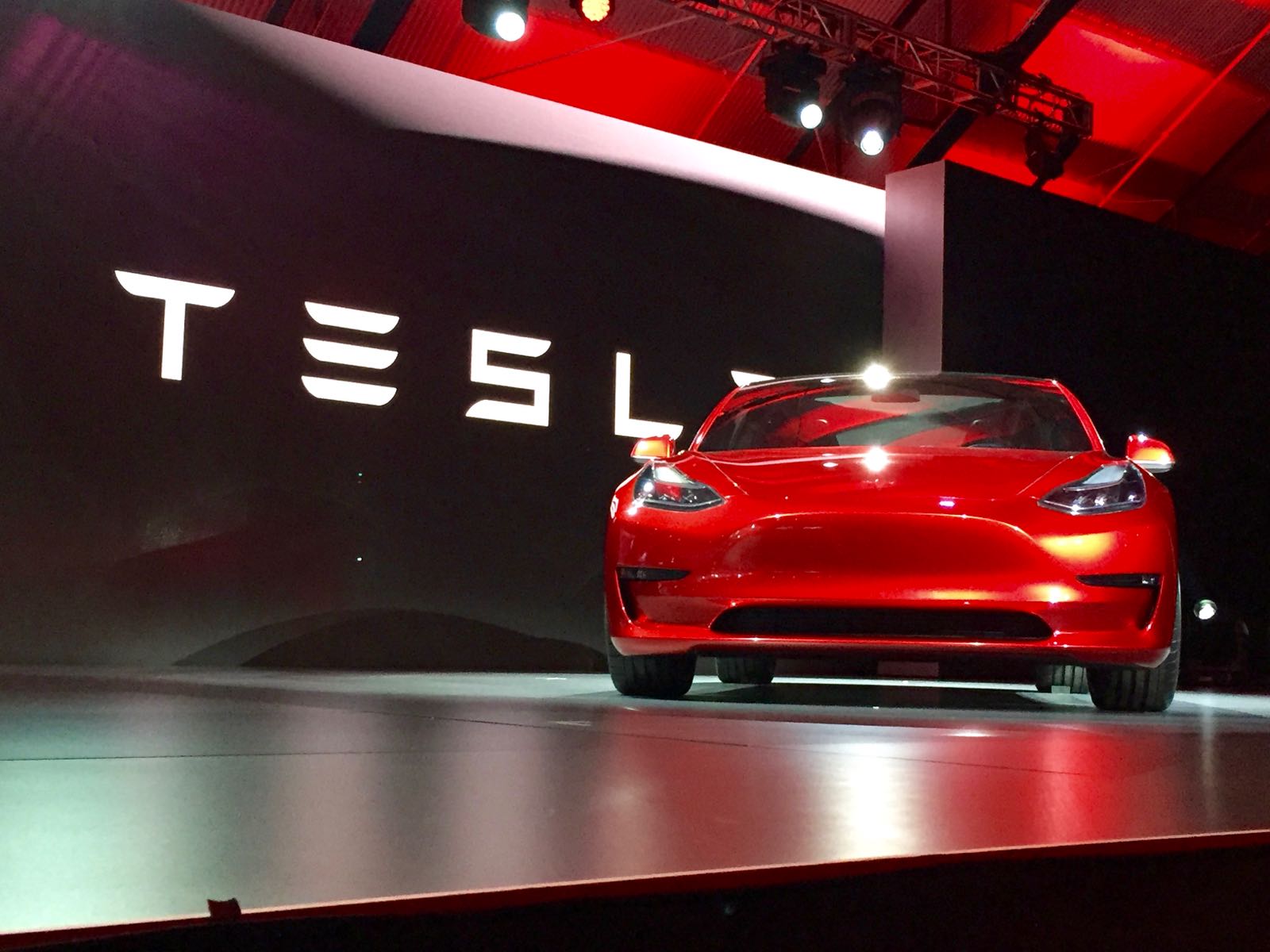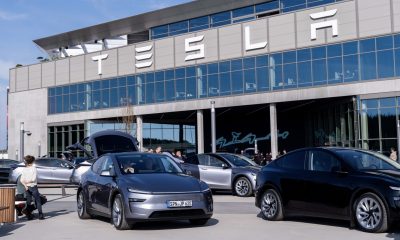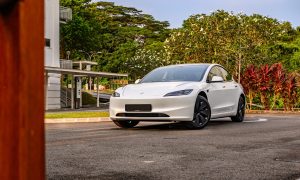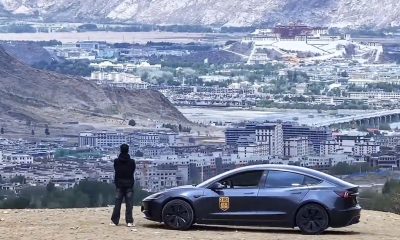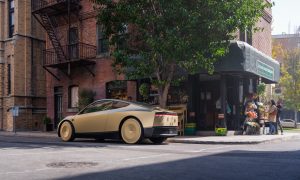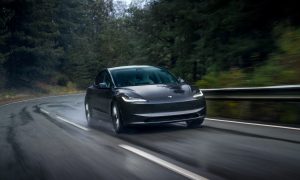News
Tesla Model 3 has an important upper middle class audience to please

As Elon Musk continues to focus on his top 3 priorities for Tesla, emphasis on preparing for Model 3 production – arguably the most important vehicle in the company’s history – couldn’t be more pertinent.
The Model 3 will be emblematic of Tesla’s capacity to offer a highly safe and efficient means of transport for a middle to upper middle class segment that largely depends on vehicle reliability in order to commute. It looks like these upwardly mobile folks are buying into that Tesla promise (pun intended): by October 2016, nearly 400,000 reservations had already been placed on the Tesla Model 3.
Starting at $35,000 before incentives, the Model 3 will achieve a minimum of 215 miles of range per charge and has been designed to attain the highest safety ratings in every category. According to the Tesla website, “The Model 3 combines real world range, performance, safety, and spaciousness into a premium sedan that only Tesla can build.” Potential Model 3 buyers make a reservation through the company’s website by putting down a $1000 deposit. The Model 3 has a starting price of about half the base price of the flagship Tesla Model S and has the size and stance of the Mazda 3.
Jessica Caldwell, an Edmunds.com analyst, argues that, if Tesla Motors wants “to bring the EV to the mass market, they need the Model 3 to be successful.”
The Model 3 will be a sedan, although other versions may one day include a Model Y compact SUV. Base rear-wheel-drive Model 3 vehicles are expected to achieve at least 215-miles of range; all-wheel drive will be offered, and a larger battery capacity with longer range is expected. Tesla’s Full Self-Driving Capability is also expected to be a standard offering.
“This is their chance to prove that they are not just a specialized niche automaker, but actually a long-term volume automaker,” said Karl Brauer, an analyst at Kelley Blue Book. “They have to establish that they can build a high-quality volume vehicle.”
Being upper middle class is a swirling confluence of financial comfort, identity, dreams, and lifestyle options. The Tesla Model 3 may very well become one of the most significant markers of status stability, with its associated components of having a college education, white-collar work, economic security, and home ownership. Soon, many upwardly mobile consumers will be adding “owning a Tesla” to that definition. Indeed, fewer than 5% of reservation holders are likely to choose a minimalist entry level Model 3 car. By contrast, close to 7% say they intend to check every available check box in the Model 3 Design Configurator once it becomes available.
If there’s an option available, the future upscale Tesla Model 3 audience will get it, as the number of options will be new indicators of levels of wealth and class.
Of course, these soon-to-be Tesla owners will have high expectations for all aspects of the Tesla process. First production of Model 3 is still scheduled for mid 2017, while delivery estimates for new reservations are expected to take place mid 2018 or later. Musk admitted that Tesla had hubris in designing and engineering the complicated Model X. As a result, Tesla learned a lot about selling, building, and delivering, which it applied to the Model 3 with much greater production streamlining. “With any new technology, it takes multiple iterations and economies of scale before you can make it affordable,” Musk has said. A mass-market car “was only possible to do . . . after going through the prior steps.”
The Model 3 is the next step in the learning process, but Tesla has done the preparation.
The Model 3 was unveiled in March of 2016 with operational prototype cars. In anticipation of much higher delivery numbers associated with the Model 3, Tesla hired former Audi executive Peter Hochholdinger as its Vice President of Vehicle Production. Hochholdinger had been in charge of production for the A4, A5, and Q5 vehicles, with around 400,000 vehicles per year under his watch. He should be a key asset as Tesla looks to roll out Model 3s in quantities that far exceed the number of cars the company has made to date.
Tesla has dealt lately with some supplier issues and has brought production of some components in-house. Other components, however, continue to be manufactured by established companies. For example, reports indicate that the Model 3’s center touchscreen will be supplied by LG Display.
By spring 2017, Model 3 photos and videos — shot both by bystanders and insiders — should start to circulate. Eventually, too, the government will need to ascertain the safety of Model 3 via crash-testing, and resulting reports will have a big impact on eventual delivery dates.
The Model 3 sedan will use some of the same glass technology that the company is using for its solar roof tiles, which should introduce an upper middle class audience to new ways of thinking about residential energy systems. The Model 3 is said to accelerate with an alluring still rush. It is just that rush— as well as zero-emissions and self-driving capability— that the upper middle class market has been awaiting.
News
Tesla UK sales see 14% year-over-year rebound in June: SMMT data
The SMMT stated that Tesla sales grew 14% year-over-year to 7,719 units in June 2025.
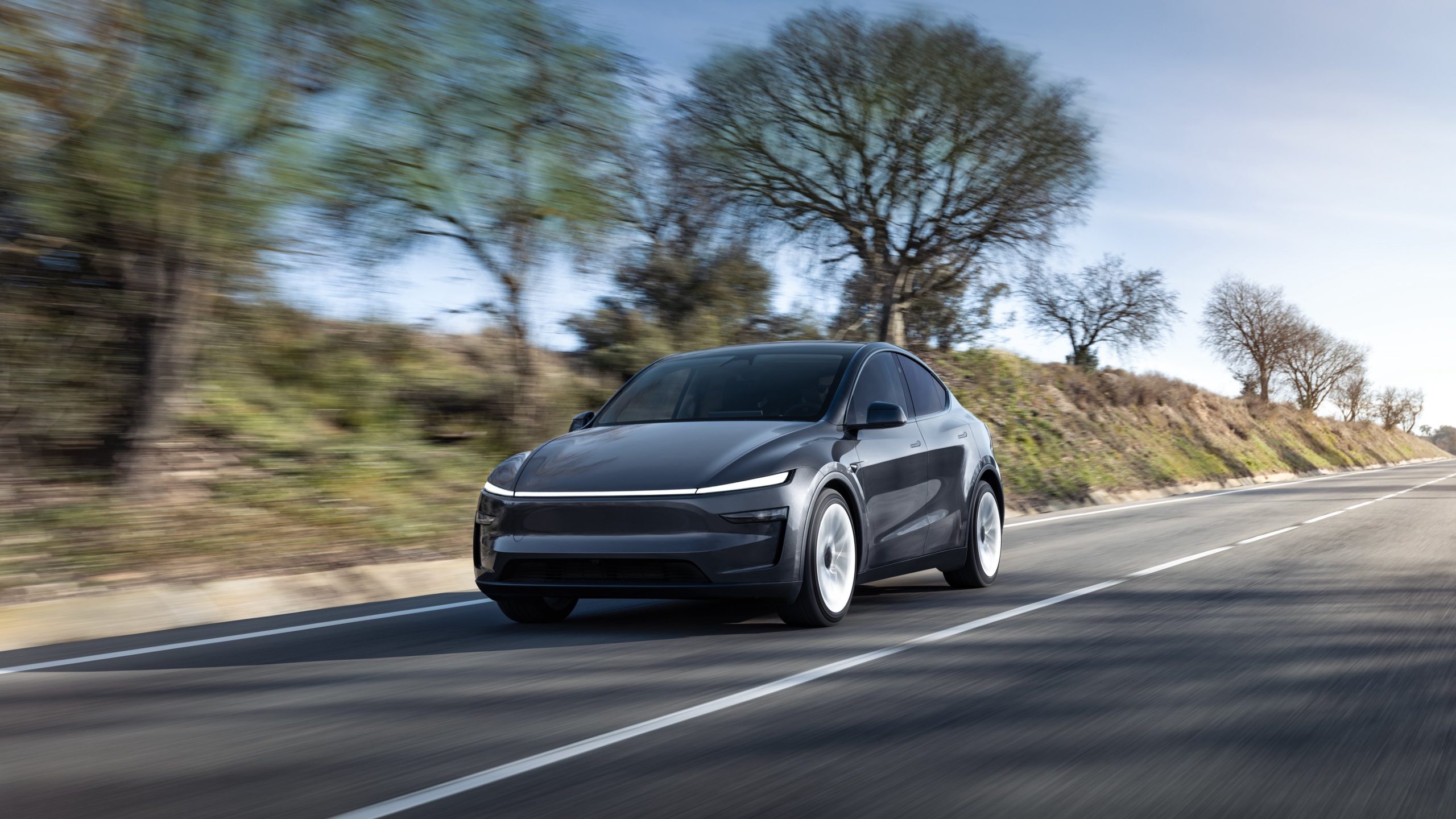
Tesla’s sales in the United Kingdom rose in June, climbing 14% year-over-year to 7,719 units, as per data from the Society of Motor Manufacturers and Traders (SMMT). The spike in the company’s sales coincided with the first deliveries of the updated Model Y last month.
Model Y deliveries support Tesla’s UK recovery
Tesla’s June performance marked one of its strongest months in the UK so far this year, with new Model Y deliveries contributing significantly to the company’s momentum.
While the SMMT listed Tesla with 7,719 deliveries in June, independent data from New AutoMotive suggested that the electric vehicle maker registered 7,891 units during the month instead. However, year-to-date figures for Tesla remain 2% down compared to 2024, as per a report from Reuters.
While Tesla made a strong showing in June, rivals are also growing. Chinese automaker BYD saw UK sales rise nearly fourfold to 2,498 units, while Ford posted the highest EV growth among major automakers, with a more than fourfold increase in the first half of 2025.
Overall, the UK’s battery electric vehicle (BEV) demand surged 39% to to 47,354 units last month, helping push total new car sales in the UK to 191,316 units, up 6.7% from the same period in 2024.
EV adoption accelerates, but concerns linger
June marked the best month for UK car sales since 2019, though the SMMT cautioned that growth in the electric vehicle sector remains heavily dependent on discounting and support programs. Still, one in four new vehicle buyers in June chose a battery electric vehicle.
SMMT Chief Executive Mike Hawes noted that despite strong BEV demand, sales levels are still below regulatory targets. “Further growth in sales, and the sector will rely on increased and improved charging facilities to boost mainstream electric vehicle adoption,” Hawes stated.
Also taking effect this week was a new US-UK trade deal, which lowers tariffs on UK car exports to the United States from 27.5% to 10%. The agreement could benefit UK-based EV producers aiming to expand across the country.
News
Tesla Model 3 ranks as the safest new car in Europe for 2025, per Euro NCAP tests
Despite being on the market longer than many of its rivals, the Tesla Model 3 continues to set the bar for vehicle safety.

The Tesla Model 3 has been named the safest new car on sale in 2025, according to the latest results from the Euro NCAP. Among 20 newly tested vehicles, the Model 3 emerged at the top of the list, scoring an impressive 359 out of 400 possible points across all major safety categories.
Tesla Model 3’s safety systems
Despite being on the market longer than many of its rivals, the Tesla Model 3 continues to set the bar for vehicle safety. Under Euro NCAP’s stricter 2025 testing protocols, the electric sedan earned 90% for adult occupant protection, 93% for child occupant protection, 89% for pedestrian protection, and 87% for its Safety Assist systems.
The updated Model 3 received particular praise for its advanced driver assistance features, including Tesla’s autonomous emergency braking (AEB) system, which performed well across various test scenarios. Its Intelligent Speed Assistance and child presence detection system were cited as noteworthy features as well, as per a WhatCar report.
Other notable safety features include the Model 3’s pedestrian-friendly pop-up hood and robust crash protection for both front and side collisions. Euro NCAP also highlighted the Model 3’s ability to detect vulnerable road users during complex maneuvers, such as turning across oncoming traffic.
Euro NCAP’s Autopilot caution
While the Model 3’s safety scores were impressive across the board, Euro NCAP did raise concerns about driver expectations of Tesla’s Autopilot system. The organization warned that some owners may overestimate the system’s capabilities, potentially leading to misuse or inattention behind the wheel. Even so, the Model 3 remained the highest-scoring vehicle tested under Euro NCAP’s updated criteria this year.
The Euro NCAP’s concerns are also quite interesting because Tesla’s Full Self-Driving (FSD) Supervised, which is arguably the company’s most robust safety suite, is not allowed for public rollout in Europe yet. FSD Supervised would allow the Model 3 to navigate inner city streets with only minimal human supervision.
Other top scorers included the Volkswagen ID.7, Polestar 3, and Geely EX5, but none matched the Model 3’s total score or consistency across categories. A total of 14 out of 20 newly tested cars earned five stars, while several models, including the Kia EV3, MG ZS, and Renault 5, fell short of the top rating.
Elon Musk
Why Tesla’s Q3 could be one of its biggest quarters in history
Tesla could stand to benefit from the removal of the $7,500 EV tax credit at the end of Q3.

Tesla has gotten off to a slow start in 2025, as the first half of the year has not been one to remember from a delivery perspective.
However, Q3 could end up being one of the best the company has had in history, with the United States potentially being a major contributor to what might reverse a slow start to the year.
Earlier today, the United States’ House of Representatives officially passed President Trump’s “Big Beautiful Bill,” after it made its way through the Senate earlier this week. The bill will head to President Trump, as he looks to sign it before his July 4 deadline.
The Bill will effectively bring closure to the $7,500 EV tax credit, which will end on September 30, 2025. This means, over the next three months in the United States, those who are looking to buy an EV will have their last chance to take advantage of the credit. EVs will then be, for most people, $7,500 more expensive, in essence.
The tax credit is available to any single filer who makes under $150,000 per year, $225,000 a year to a head of household, and $300,000 to couples filing jointly.
Ending the tax credit was expected with the Trump administration, as his policies have leaned significantly toward reliance on fossil fuels, ending what he calls an “EV mandate.” He has used this phrase several times in disagreements with Tesla CEO Elon Musk.
Nevertheless, those who have been on the fence about buying a Tesla, or any EV, for that matter, will have some decisions to make in the next three months. While all companies will stand to benefit from this time crunch, Tesla could be the true winner because of its sheer volume.
If things are done correctly, meaning if Tesla can also offer incentives like 0% APR, special pricing on leasing or financing, or other advantages (like free Red, White, and Blue for a short period of time in celebration of Independence Day), it could see some real volume in sales this quarter.
You can now buy a Tesla in Red, White, and Blue for free until July 14 https://t.co/iAwhaRFOH0
— TESLARATI (@Teslarati) July 3, 2025
Tesla is just a shade under 721,000 deliveries for the year, so it’s on pace for roughly 1.4 million for 2025. This would be a decrease from the 1.8 million cars it delivered in each of the last two years. Traditionally, the second half of the year has produced Tesla’s strongest quarters. Its top three quarters in terms of deliveries are Q4 2024 with 495,570 vehicles, Q4 2023 with 484,507 vehicles, and Q3 2024 with 462,890 vehicles.
-

 Elon Musk4 days ago
Elon Musk4 days agoTesla investors will be shocked by Jim Cramer’s latest assessment
-

 News1 week ago
News1 week agoTesla Robotaxi’s biggest challenge seems to be this one thing
-

 Elon Musk2 weeks ago
Elon Musk2 weeks agoFirst Look at Tesla’s Robotaxi App: features, design, and more
-

 News2 weeks ago
News2 weeks agoWatch Tesla’s first driverless public Robotaxi rides in Texas
-

 News2 weeks ago
News2 weeks agoSpaceX and Elon Musk share insights on Starship Ship 36’s RUD
-

 News1 week ago
News1 week agoWatch the first true Tesla Robotaxi intervention by safety monitor
-

 News2 weeks ago
News2 weeks agoTesla has started rolling out initial round of Robotaxi invites
-
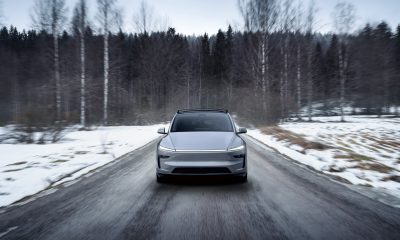
 Elon Musk2 weeks ago
Elon Musk2 weeks agoTesla to launch in India in July with vehicles already arriving: report

